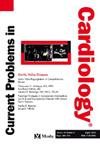白细胞介素-36:动脉粥样硬化的新治疗靶点。
IF 3.3
3区 医学
Q2 CARDIAC & CARDIOVASCULAR SYSTEMS
引用次数: 0
摘要
心血管疾病仍然是全球发病率和死亡率的首要原因,动脉粥样硬化是大多数相关疾病的病理基础。尽管他汀类药物治疗具有临床益处,但仍存在大量残留风险,因此需要探索新的治疗靶点。白细胞介素-36 (IL-36)是白细胞介素-1家族的一员,已成为免疫和炎症反应的关键调节因子。除了在组织修复、宿主防御和炎症信号传导方面的既定作用外,IL-36也越来越多地参与心血管病理,包括心肌梗死、缺血性损伤和心肌炎。最近的证据表明,它的促动脉粥样硬化功能通过持续的血管炎症、血管生成异常、胆固醇代谢受损、中性粒细胞胞外陷阱过度形成和自噬破坏介导。这些发现共同表明,IL-36不仅有助于动脉粥样硬化的发生和进展,而且还有望成为潜在的治疗靶点。本文综述了IL-36的调控作用和信号机制的最新进展,重点介绍了其在动脉粥样硬化中的作用。本文章由计算机程序翻译,如有差异,请以英文原文为准。
Interleukin-36: a novel therapeutic target for atherosclerosis
Cardiovascular diseases remain the foremost cause of global morbidity and mortality, with atherosclerosis serving as the pathological basis for most related disorders. Despite the clinical benefits of statin therapy, a substantial residual risk persists, underscoring the need to explore novel therapeutic targets. Interleukin-36 (IL-36), a member of the interleukin-1 family, has emerged as a key regulator of immune and inflammatory responses. Beyond its established roles in tissue repair, host defense, and inflammatory signaling, IL-36 has been increasingly implicated in cardiovascular pathology, including myocardial infarction, ischemic injury, and myocarditis. Recent evidence highlights its pro-atherogenic functions mediated through sustained vascular inflammation, abnormal angiogenesis, impaired cholesterol metabolism, excessive neutrophil extracellular trap formation, and disrupted autophagy. These findings collectively suggest that IL-36 not only contributes to the initiation and progression of atherosclerosis but also holds promise as a potential therapeutic target. This review summarizes recent progress on the regulatory roles and signaling mechanisms of IL-36, emphasizing its contribution to atherogenesis.
求助全文
通过发布文献求助,成功后即可免费获取论文全文。
去求助
来源期刊

Current Problems in Cardiology
医学-心血管系统
CiteScore
4.80
自引率
2.40%
发文量
392
审稿时长
6 days
期刊介绍:
Under the editorial leadership of noted cardiologist Dr. Hector O. Ventura, Current Problems in Cardiology provides focused, comprehensive coverage of important clinical topics in cardiology. Each monthly issues, addresses a selected clinical problem or condition, including pathophysiology, invasive and noninvasive diagnosis, drug therapy, surgical management, and rehabilitation; or explores the clinical applications of a diagnostic modality or a particular category of drugs. Critical commentary from the distinguished editorial board accompanies each monograph, providing readers with additional insights. An extensive bibliography in each issue saves hours of library research.
 求助内容:
求助内容: 应助结果提醒方式:
应助结果提醒方式:


